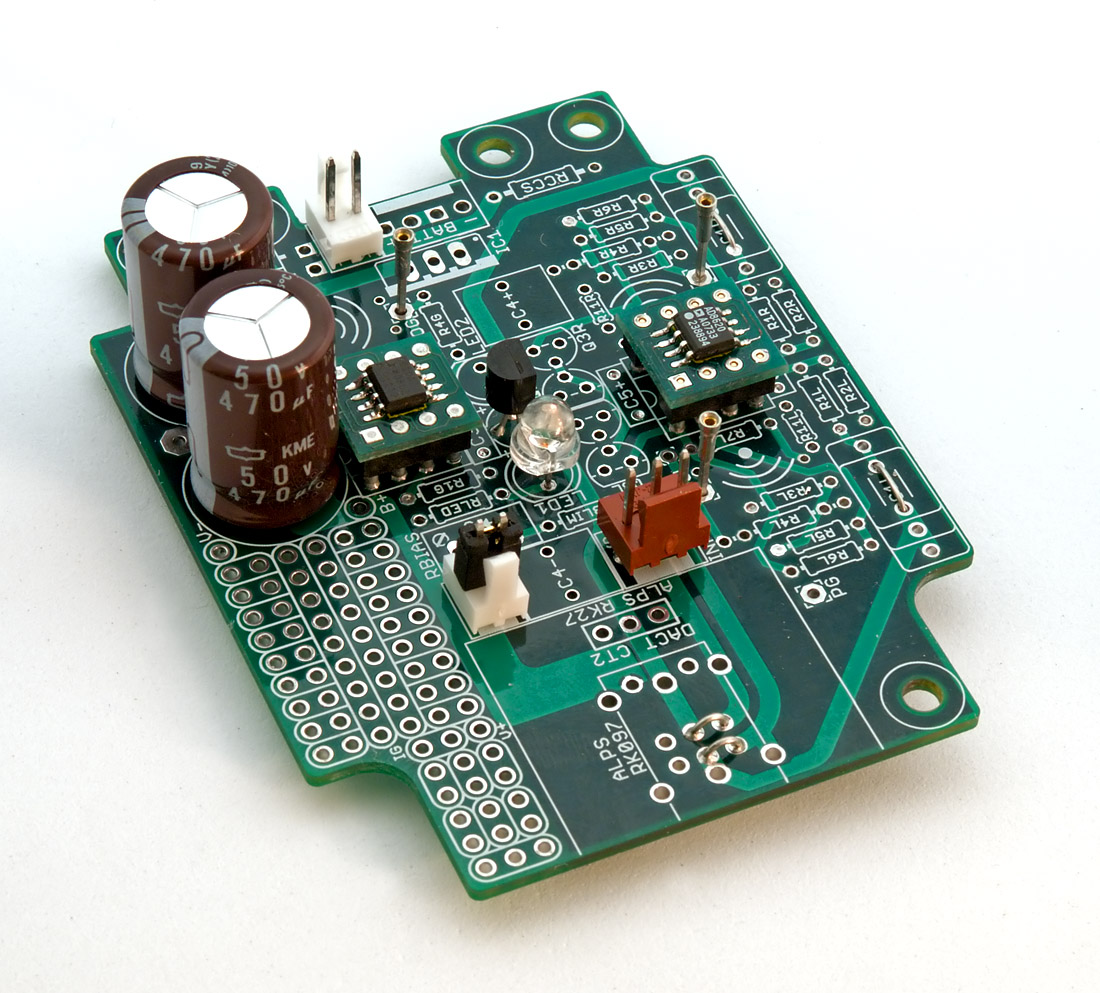linuxworks
Member of the Trade: Sercona Audio
- Joined
- Oct 10, 2008
- Posts
- 3,456
- Likes
- 69
since 'the other forum' seems still to be down, lets talk about the pimeta-v2 here.
I just built my prototype last nite. some pics:



I opted to go with a 'mostly SMD' build ... all the fun stuff is underneath

one thing that I wasn't 100% sure of and needed to check the spec sheets on; I used tantalum smd caps and they mark the band with the PLUS side of the cap not the minus! I did recall that they were the opposite of eletrolytics but its probably worth mentioning in the instructions just for safety sake.
I wasn't sure if I had a solder bridge on the pads that hold the tant caps but it appears the resist did its job. still, I would have liked a bit more void around the copper pads on parts like that. once a tant or diode is soldered down, its hard to tell if there is excess solder that could short or not.
also, I'd suggest adding or moving the index dots (plus signs or dots for chips or other indexing silkscreen) so that even when the parts is installed, the legend isn't covered. this helps desk-checking or magnifier checking without having to have a board layout printout handy. example would be the smd buffers - once they are installed, the silkscreening is completely covered and you can't see where the index dot is anymore. minor detail, though - but if there is going to be another rev before its final, I'd like to suggest this slight silkscreen change.
I have not used the proto area yet. still thinking what my first hack will be for that section of the board

I used the default gain as spec'd in the schematic. on my sony mdr-v6 phones (my junk ones that are 'ok' to blow up on testing) I noticed more hiss than I'd want, on pause. however on my senn hd650 it sounds fine so it was probably a gain issue. on my next build I might lower the gain a bit or just provide switchable gain via relay-paralleling R's at the R4 spot.
the pimeta is being fed 24v from a TREAD that also supplies voltage to my volume control chip (burr brown PGA chip thing that I'm also working on). when I tested it at 9v, it sounded 'just fine' also, so I guess it passes the portables voltage test, too.
I just built my prototype last nite. some pics:



I opted to go with a 'mostly SMD' build ... all the fun stuff is underneath

one thing that I wasn't 100% sure of and needed to check the spec sheets on; I used tantalum smd caps and they mark the band with the PLUS side of the cap not the minus! I did recall that they were the opposite of eletrolytics but its probably worth mentioning in the instructions just for safety sake.
I wasn't sure if I had a solder bridge on the pads that hold the tant caps but it appears the resist did its job. still, I would have liked a bit more void around the copper pads on parts like that. once a tant or diode is soldered down, its hard to tell if there is excess solder that could short or not.
also, I'd suggest adding or moving the index dots (plus signs or dots for chips or other indexing silkscreen) so that even when the parts is installed, the legend isn't covered. this helps desk-checking or magnifier checking without having to have a board layout printout handy. example would be the smd buffers - once they are installed, the silkscreening is completely covered and you can't see where the index dot is anymore. minor detail, though - but if there is going to be another rev before its final, I'd like to suggest this slight silkscreen change.
I have not used the proto area yet. still thinking what my first hack will be for that section of the board

I used the default gain as spec'd in the schematic. on my sony mdr-v6 phones (my junk ones that are 'ok' to blow up on testing) I noticed more hiss than I'd want, on pause. however on my senn hd650 it sounds fine so it was probably a gain issue. on my next build I might lower the gain a bit or just provide switchable gain via relay-paralleling R's at the R4 spot.
the pimeta is being fed 24v from a TREAD that also supplies voltage to my volume control chip (burr brown PGA chip thing that I'm also working on). when I tested it at 9v, it sounded 'just fine' also, so I guess it passes the portables voltage test, too.



















